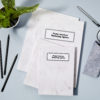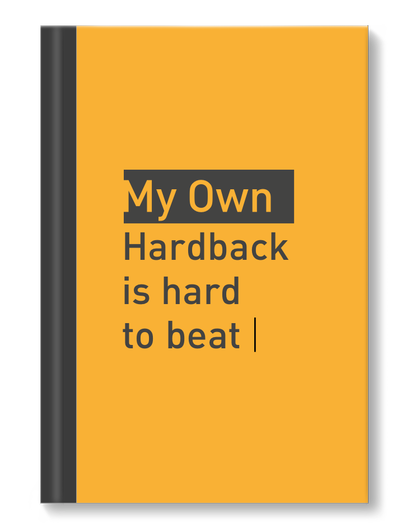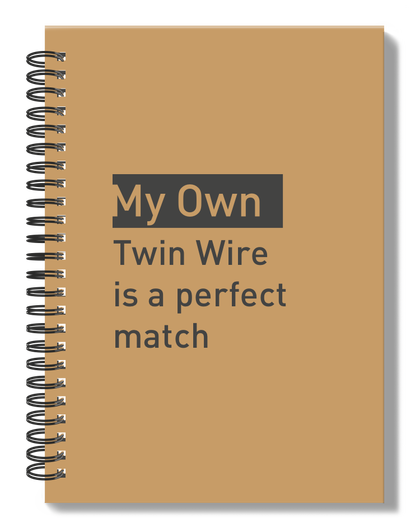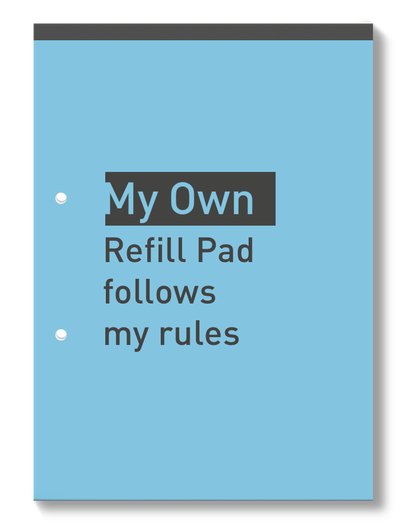Ultimate Guide to Effective Note Taking Methods
Ultimate Guide to Effective Note Taking Methods
Taking notes is an essential part of study. Yet, although the principle of taking notes is quite simple, without a note taking strategy or structure, what you have written down can easily become an incoherent or essentially useless resource. How many times have you returned to your notes from a class, meeting or lecture and thought to yourself, ‘What on Earth do these mean?’ Taking relevant notes is a skill, and yet effective note taking methods are not widely taught throughout the education system.
Good notes are essential for your long term understanding of a topic, and make revision periods considerably less stressful. A good technique also makes your experience in the classroom much easier; it helps you to actively engage in what is being said, helps you to make connections between ideas and requires you to think about what you're putting down on paper. Adopting a good note taking method will not only serve you well through school, you will also benefit from it throughout higher education and on into the world of work.
So, what are the methods of note taking? There are many specific note taking methods out there, all of which are easy to execute and extremely effective. Everything you write down in note form must have value; each of these methods ensures information retention and recall, and makes sure that you do not waste a single word!
Sentence Method
The sentence method is best employed when you want to take quick and simple notes. If you are in a fast paced lesson where a lot of information is being covered, then this will help you to extract the most important facts and ideas.
When a new topic is introduced you will write it down as a subheading. Under this sub heading, you write down each important piece of information you hear as a bullet pointed sentence. So, you are listening to the teacher, they say something of note, you write it down as a full sentence, and then move on to a fresh, bullet pointed sentence with each new idea. This way, when you return to the notes, all you will see is the pure facts; the important information that you need without all of the waffle in between!
Simply put:
-
Write down each new idea as a bulleted sentence.
-
Start a fresh sentence for every new piece of information.
-
Separate ideas with topic subheadings.
Charting Method
The note taking method known as charting is an excellent technique to use in a situation where you need to organise a lot of facts and need to understand the relationship between them. They are easy to review and make it easier to identify the key facts present under any given topic. This is especially good in a lesson in which you are covering multiple related categories.
Divide your page in to columns; there should be as may columns as there are categories, or sub topics. The details or facts related to each column are listed in simple note form below. This helps you to extract important information, and relate facts across categories.
Simply put:
-
When a new piece of information about a topic or category is mentioned, note it down in the appropriate column.
-
Ensure you move across to the next column when a new topic is introduced.
Mapping Method
If you respond better to a more visual way of learning, then the mapping method is an ideal way for you to take notes. Many people struggle to retain information from notes written in a linear form, this visual method helps to plaster facts and ideas into the mind of the visual learner. It is also an extremely good way to work out correlations and relationships between topics.
At the top of your page, put the main topic in a big circle or bubble. This topic can then branch off into sub topic bubbles; draw lines out from the main topic to connect with the sub topics. You then branch the sub topics out in to facts and information. This can be done in a list formation or can take on more of a ‘spider diagram’ aesthetic, whatever works best for you.
Simply put
-
Begin by putting the main topic at the top, or in the middle of the page.
-
Branch subtopic bubbles out from the main topic.
-
Branch out facts and ideas from the sub topic bubbles.
Cornell Method
The Cornell method is an extremely effective note taking method if you want a concise and detailed summary of a topic all on one page. This means that you will not have to dig through pages of sprawling notes when you come to revise, it will all be there in one place!
Divide your page into three sections (A4 page); an approximately 7cm margin on the left of the page, a 5cm summary section at the bottom, leaving a large remaining section on the right for the bulk of your notes. You take down your main notes in class using the large section to the right. After the class you pull out the main topics and ideas and place them in the smaller section to the right (we call this the ‘cues’ column), and summarise the lesson and subject in the bottom section. This should leave you with a detailed overview of the subject.
Simply put:
-
Use the main section to take class notes.
-
After the lesson use the ‘cues’ section to review your notes, and the bottom section to summarise.
Outline Method
The outline method organises topics through a series of subheadings and bullet points. Great for cramming in lots of detail. It is a very good way to produce simple and organised notes that could easily come across as daunting and messy.
This note taking method is probably the most recognizable. out your main topic at the top of the page, in the centre, then follow it with subtopic headings underneath, to the left of the page. Then notate information on these sub topics in bulleted form underneath.
Simply put:
-
Main topic at the top and center of the page.
-
Subtopic headings on the far left.
-
Sub topic notes presented as bullet points.
Recent Articles
Hardback Book
Create customised covers for your hardback notebooks with My Own Stationery. Our hardback notebooks are available in casebound or wirebound, A4 & A5 sizes, with your choice of 8mm lined or blank pages for wirebound and 8mm lined for casebound, both with a high-gloss finish. Create your own unique cover by uploading your completed design, or design your front and back covers using our online design builder.
Softback Book
Our customisable cover softback notebooks are available in wirebound style, with a choice of sizes, number of pages, and either high-quality lined or blank paper. Depending on the type of book you choose, you have the option to upload your professional design or custom design the front & back cover in our online design builder.
Refill Pad
Customise an A4 Refill Pad cover with your own brand using our online design builder at My Own Stationery, choose between uploading a completed professional design or design your own using our online design builder. Our A4 Refill Pads are made with high-quality paper to ensure your design is as unique as your brand.





